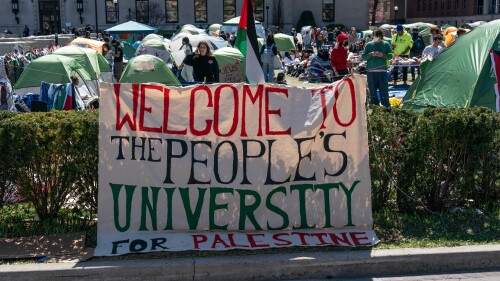Universities in the Persian Gulf should offer more Arabic-language instruction and require more courses in the region’s history and culture, a scholar from the United Arab Emirates said here Tuesday during a panel discussion at the annual meeting of the Middle East Studies Association.
Fatima Badry, director of graduate programs at the American University of Sharjah’s College of Arts and Sciences, said that at her country’s universities, both public and private, “students can graduate without ever learning anything much about the U.A.E.'s society. There are very few required courses on the gulf’s history, very few courses on Arab culture, very few courses on religion.”
Dozens of universities have opened in the region during the last decade (The Chronicle, July 25). Many of the new institutions have partnerships with universities in the West.
The explosion of American-style higher education in the gulf has given rise to anxieties about cultural imperialism, Ms. Badry said. She did not endorse that view, saying there are good reasons for the region to have adopted Western curricula and English-language instruction. At the same time, she said, the new universities are not adequately transmitting the region’s cultural heritage.
“This discussion does not have to be framed in binary terms,” she said. “A middle road is possible.” She pointed to the example of continental Europe, where many students learn English as a lingua franca but still absorb their own national cultures.
‘A Process of Arabization’
A slightly different assessment was offered by John Willoughby, a professor of economics at American University here. Mr. Willoughby taught for two years at the American University of Sharjah and has recently studied the relationship between higher education and labor markets in the Persian Gulf.
“One might view these new universities as an imperialist project, but I think that’s wrong,” Mr. Willoughby said. “These regimes are very extroverted in their relationships with the rest of the world. They know what they’re doing.”
Many engineering and financial jobs in the gulf region are now held by Westerners, Mr. Willoughby noted. But the new universities, he said, will give rise to a new generation of highly trained workers—largely Arab and South Asian—who can compete for those positions.
“It might almost be better to see this as a process of Arabization or Asianization, not a process of Westernization,” he said. “The analogy I like to use is the 19th century, when English engineers went to Germany to help design factories. That might have looked at the time like the export of a British model, but it actually led to something much more dynamic and multipolar.”
In a recent working paper, Mr. Willoughby sketches a rough typology of the new universities in the gulf. Some have loose affiliations with Western institutions, while some are full-fledged branch campuses. Still others are independent, but seek validation from American accrediting bodies. (The American University of Sharjah, for example, is accredited by the Middle States Association of Colleges and Schools.)
“In all of these models, there are trade-offs between credibility and risk,” he said during Tuesday’s panel. “The tighter the relationship, the greater the potential risk to the reputation of the American or British institution that sponsors the campus.”
Without citing particular cases, Mr. Willoughby predicted that “we will see some failures of the branch-campus model.” Over time, he said, more institutions might adopt Sharjah’s approach, seeking accreditation from American agencies but remaining largely independent from American universities.



